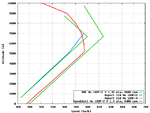HellToupee
Banned
- 90
- May 30, 2007
I think it´s pretty safe to challenge this statement. The Bf-109F struggled over France? If so, then no less than the Fw-190. As a matter of fact, the RAF had a very negative fighter exchange ratio versus Bf-109F and Fw-190A over France and particularely vs Bf-109 over Malta and North Afrika in the 1941 to 1942 timeframe. I can only see an empirical but no statistical justification to make this claim. The Fw-190 impressed the RAF because it was something new. Had they been able to test a Bf-109F4 in good condition, they would have been more impressed wrt performances.
The soviets tested both and found the Fw-190A beeing less dangerous than the Bf-109F/G of this timeframe.
Spit V and 109f were quite evenly matched for performance, spitfire pilots were extremely confident engaging 109s since it matched its performance and exceeded it in manoverability, where as 190 performed better also was highly manoverable with its roll rate and an elevator that responded at high speeds.

